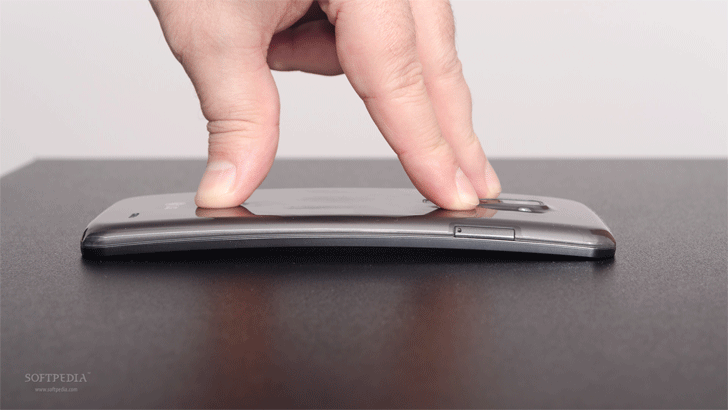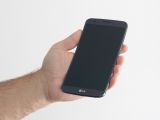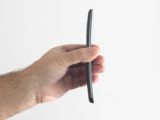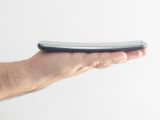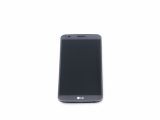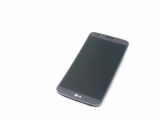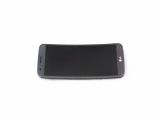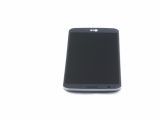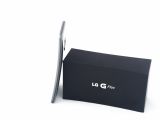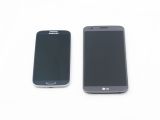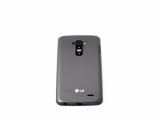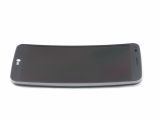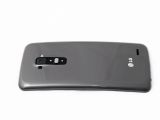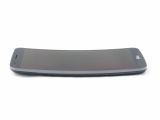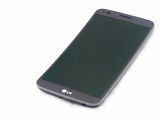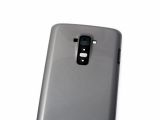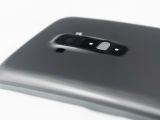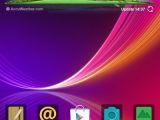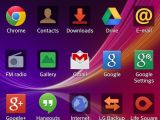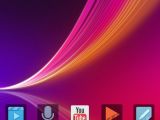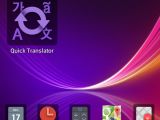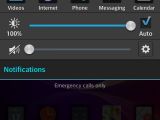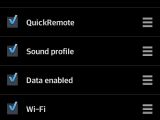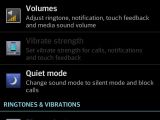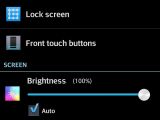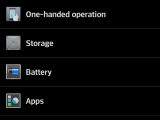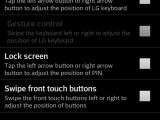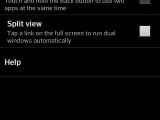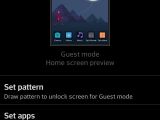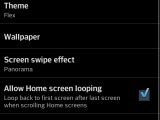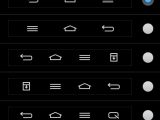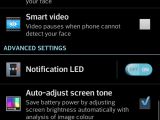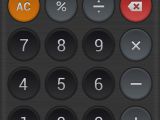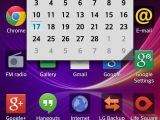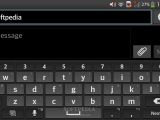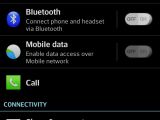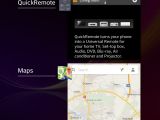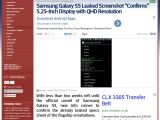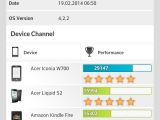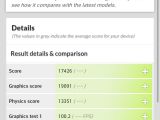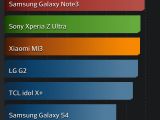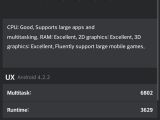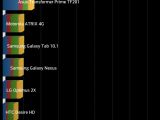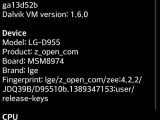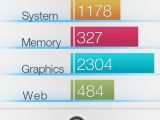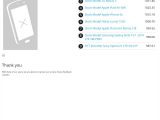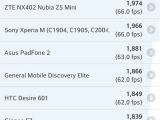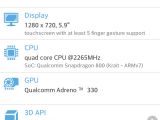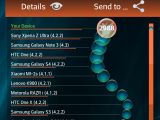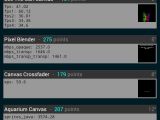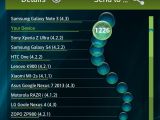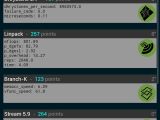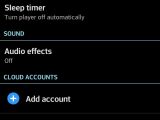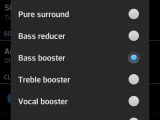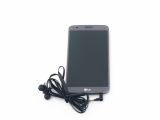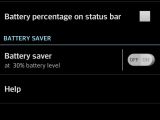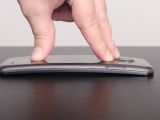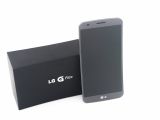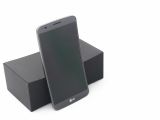Although LG is the runner-up on the curved smartphone market, the G Flex is the only handset in this category that is available worldwide. The tech savvy may already know that Samsung was the first company to announce and release a smartphone that packs a curved display, the Galaxy Round.
However, the South Korean company admitted a few weeks later that it was produced in limited quantities and would only be released in one or two countries. Samsung felt the need to be the world’s first handset maker to launch such a device, though it wasn’t really prepared for a mass market product.
LG, on the under hand, did its homework better and made the G Flex available in several markets only one month after the official announcement. The smartphone was very well received by both media and end users, which probably made LG ramp up G Flex’s production for release in additional countries.
LG G Flex is currently available in more than 100 countries and, even though the price tag may seem prohibitive for an Android smartphone given the technologies embedded in the device, it’s well worth the investment.
However, even those who can afford purchasing such an expensive device may not like it due to some compromises LG made in order to keep the price within common sense limits.
The G Flex is not the perfect device, but introduces something innovative that hasn’t been done yet. Well, with one exception, as the technology in the Galaxy Round is similar.
It’s also worth mentioning that, while both LG G Flex and Samsung Galaxy Round boast large curved display, they are completely different. The former’s screen is curved up to bottom, whereas the latter’s display it curved left to right.
Due to this, each company pitched their smartphones differently. While Samsung praised the Galaxy Round’s curved shape that makes it more pocketable than standard smartphones, LG highlighted contours, molding better on one’s face when talking.
The G Flex was pretty expensive at launch, but as of right now you can get one for around €750 ($1,050). Obviously, the smartphone is considerably cheaper on contract, but that will require you to commit to a long-term agreement.
Design
Given G Flex’s unusual form factor, LG had to make some compromises regarding design, but not everything ended up the way the South Korean probably wanted.
For example, the smartphone measures 160.5 x 81.6 x 8.7 mm and weighs 177g (battery included). The problem with the LG G Flex is not weight or thickness, but size.
The smartphone is really large even for a phablet, which makes it difficult to carry, not to mention that it’s close to impossible to handle it with just one hand.
Due to its large size and curved shape (up to bottom), it will be extremely difficult to keep the LG G Flex in a standard pocket. That’s something you should consider before purchasing LG’s curved smartphone.
Aside from the curved form factor, LG G Flex strikingly resembles the G2. Those familiar with LG’s flagship smartphone will find many similarities with the G Flex. The same applies for the software included in both Android top-tier handsets.
The front side of the LG G Flex features a huge 6-inch display with thin enough bezels. At the bottom of the screen, there are the usual on-screen keys Back, Home and Menu, in this order.
Although these can be customized by users, it would have made more sense for LG to arrange the on-screen buttons just like all the other Android smartphones: Menu, Home, Back. This seems to be a trademark for LG, as the company is using the same arrangement for the G2 as well.The 2.1-megapixel camera in the front has been placed right above the screen, along with the LED notification light and a whole range of sensors (proximity, ambient light).
The backside of the LG G Flex is entirely innovative. Apart from the fact that it features self-healing coating, which is meant to repair inevitable scratches, the phone may get over the course of a few months.
Most buttons that are usually placed on the sides and/or top of a phone have been moved on the back. The G Flex features the same button layout as the G2, so expect to find the power on/off and volume keys right under the camera.
This might sound unusual for those unfamiliar with LG G2, which was the first smartphone to include the Power button on the back cover. Still, if you think about it, it makes more sense to put it right under the camera, where you can reach it without having to use both hands.
Obviously, the larger the smartphone the more useful this relocation of the Power button is. It will take several days to get used with the button being placed on the back side, but it makes it so much easier to operate the phone with only one hand.
And then, there are the Volume keys, which look like two metallic dots placed above and below the Power button. These are a bit harder to pinpoint with your fingers, as they are just small protuberances under the camera.
Nevertheless, they are much easier to use as opposed to their placement on the right or left side of the G Flex. Due to the fact that the curved smartphone is really large, the Volume keys would have been placed too far for anyone’s fingers to reach it easily.The main camera per se is a 13-megapixel monster with a decent LED flash to the right. To the left side of the camera, LG thought it would be wise to put in an IR Blaster. This is a very unusual place to add an IR Blaster port, but the location does not hinder its use.
To the bottom right of the back cover there’s a small loudspeaker, which won’t be muffled when the phone is put on a table. Due to its curved form factor, the loudspeaker won’t make contact with any surfaces that you keep your phone on.
As mentioned earlier, LG moved most of the common buttons on the back cover, but there are still some that kept their original locations. For example, LG G Flex has a small microUSB port on the bottom side. To the right of the microUSB port, there’s the mouthpiece and the 3.5mm audio jack.
Nothing has been placed on top or right sides of the phone, but you will find the microSIM slot on the left side of the LG G Flex.
Regarding the smartphone’s flexibility capabilities, I couldn’t find anything worth justifying the curve form fact of the G Flex except for the better ergonomics.
I’ve tested the smartphone to see if it’s really flexible, and other than putting it on a hard surface and push down on it until it becomes straight, there’s no real use for this feature except for show.
LG G Flex has one more piece of innovation inside and that’s the curved battery that you can’t see due to the fact the smartphone packs a non-removable back cover.This makes perfect sense given the fact that there aren’t any flexible batteries available on the market due to the technology being completely new. LG’s patented technology for this type of battery is probably a well-guarded secret, so not many companies may be able to bring anything similar to the market.
Overall, LG G Flex is a hard-to-carry-around smartphone even for a phablet, but the curved layout has its advantages. Great ergonomics when crossing your fingers on the display or when talking on the phone, as well as better protection when the phone is put on a straight surface face down.
Aside from the fact that it’s extremely large, I found the LG G Flex elegant when it comes to design and nice to the touch. The overall build quality and the materials used for its manufacture are exactly what you would expect from a top-tier smartphone.
Display and Camera
The main selling point of the LG G Flex, the 6-inch display, is also one of its downsides. LG and Samsung came with their own solution for mobile flexible displays and both have their strong points, but also their disadvantages.
LG preferred to include a huge 6-inch screen onto the G Flex, whereas sporting a slightly smaller 5.7-inch display. However, LG’s OLED screen is made of plastic. Yes, you read that right, LG G Flex packs a plastic OLED display, which is why it’s so flexible after all.
Nothing wrong here; what’s really disappointing is the fact that it only supports HD (720p) resolution and, even more disappointing, it only features 245ppi (pixel density).
There seems to be some issues with the LG G Flex display, as the images look noisy. It’s like reading from crepe paper. That can be an issue for some users, but personally, I found that it gives G Flex a retro aura.The low pixel density emphasizes the flaws within the display even more, so my suggestions is to check the LG G Flex while it’s powered on to have a better idea of how the display performs. I’m not sure why the South Korean company decided to go ahead with the inclusion of this display onto the G Flex, as the flaw is extremely obvious.
Sunlight eligibility is poor as well, even though the curved shape of the screen should have improved readability when exposed in strong light. Unfortunately, the improvements, if there are any, are almost imperceptible.
However, the G Flex’s display really shines when it comes to contrast and colors. Brightness is another aspect that performs admirably, as LG G Flex can output close to 400 nits with the toggle set to maximum.
Given the fact that the display features a plastic substrate, it makes sense for LG to add an extra layer of protective coating, in this case Corning Gorilla Glass 2.
LG G Flex’s main camera sounds great on paper. According to the South Korean company, the smartphone packs a 13-megapixel camera that can capture photos with 4160 x 3120 pixels resolution.
The camera can also record full HD (1080p@60fps) videos and offers both autofocus and HDR. You will also be able to take pictures while recording videos. The secondary 2.1-megapixel camera can also record full HD (1080p@30fps) videos.LG G Flex comes with a great feature called “dual recording,” which allows users to record videos with both cameras at the same time. However, while using this feature you will only be able to capture 720p quality videos.
The only thing missing from G Flex’s camera is optical image stabilization. Overall, the quality of the pictures is quite decent, but still far from being impressive. You can find some samples in the gallery below.
The LED flash included is perfect for taking night pictures. It really works well, but for an optimal result you should not be more than 5 meters apart from the subject. The camera UI seems to have been ported from the LG G2, which is in no way a bad thing.
Menu and Software
LG G Flex is powered by Android 4.2.2 Jelly Bean out of the box, but the South Korean company promised a KitKat upgrade would be available for download at some point. Unfortunately, LG continues to keep us in the dark with the release of this update, so there’s no telling whether it will come sooner rather than later.
Still, the G Flex comes with some nifty software features that have been included for the first time within the G2 model. The customized software the LG G Flex comes with some cool features such as KnockON, Dual Window Multitasking, Q-Theater multimedia hub, as well as some very nice animations and live wallpapers.
Speaking of which, LG G Flex comes by default with a unique day/night live wallpaper that changes automatically and can be browsed by swinging the phone up and down.The lockscreen of the smartphone can have several panes where you can put a widget, such as the camera or some of the most popular Google services (Gmail, Google+).
The five shortcuts at the bottom of the homescreen can be customized, so you will able to change them with anything else. Keep in mind that you won’t be able to remove/change the app drawer shortcut, but the other four are fully customizable.
As expected, you can add up to seven homescreen panes where you can keep widgets and shortcuts to games, apps and services.
LG G Flex comes with an innovative feature called Q Slide which will allow you to use small resizable apps while at the same time working within another full-screen app. The Quick Memo feature that’s been so popular on the G2, allows users to take screenshots anywhere within the phone.The notification area can be fully customized as well, so you can add/remove any of the shortcuts already included. You can also rearrange the toggles in the notification area for easier access.
Another innovative feature included by LG is called Slide Aside, which allows you to put up to three apps into some sort of sleep mode. You can easily do that with a three-finger swipe from right to left. The applications will appear in the Slide Aside UI and can be switched between with a three-finger swipe from the left side of the phone.
As the name suggests, the Dual Window feature provides users with the option to split the screen into two and work with two applications at the same time. However, not all applications are compatible with LG’s split-screen feature and you cannot open the same app twice in order to work with two instances of the same app.LG G Flex also integrates some pre-defined modes that can be selected on the fly: Guest mode, Quiet Mode and One hand operation. The former is activated with a preset unlock pattern and only offers access to five apps included in the phone: camera, music player, video player, quick remote and calculator.
The Quiet Mode mutes all incoming calls between certain periods of time, but you will be able to add certain numbers on the exception list.
Last but not least, the One hand mode will allow users to move the screen unlock, dialer and keyboard to the left or right of the screen for easier access with one hand.
Communication
The G Flex offers the entire connectivity package, such as dual band Wi-Fi, dual band 4G LTE, Bluetooth, NFC (Near Field Communication), USB on-the-go and GPS with A-GPS support.
LG G Flex supports quad-band GSM band, tri-band 3G with HSPA and NFC Beam. It also provides DLNA, Wi-Fi direct, Wi-Fi Hotspot and 3.5mm audio jack, so you can put your own headphones in.
The microUSB placed on the bottom side of the smartphone acts as a SlimPort and supports wired connections via adapters, which are not provided in the sale package.It’s also worth mentioning the G Flex also includes an IR Blaster and a QRemote application that allows users to control compatible TVs or other multimedia devices.
In terms of software, the phablet comes pre-loaded with Google’s Chrome application, but also includes the native Android browser. Both offer Internet web browsing experiences, so regardless of your preferences the G Flex will not disappoint you.
Processor and Memory
Just like many other new flagship smartphones, LG G Flex is powered by Qualcomm’s Snapdragon 800 chipset that accommodates a 2.3GHz quad-core processor and an Adreno 330 graphics processing unit.
From the average user’s perspective, LG G Flex is a powerful smartphone that offers blazing fast performance no matter what games or applications you throw at it.
Tech savvy who wish more proves the LG G Flex is a fast smartphone may want to check out some of the benchmarks we ran while testing the device.Suffice to say, LG’s flagship device is among the top scorer in all benchmarking applications, so if you were wondering whether it was powerful enough, there is your answer.
Furthermore, the G Flex packs 2GB of RAM and 32GB of internal memory, of which only 24GB user-available. The bad news is the phablet lacks microSD card slot for memory expansion, so the only way to get more storage is via any of the available free cloud services.Multimedia
As we mentioned earlier in the article, LG G Flex comes with an innovative feature called Q Theater which can be launched with a simple pinch-to-zoom out gesture while the phone is in landscape mode, or you can use the shortcut in the main menu.
It includes shortcuts to the main multimedia areas included in the phone, such as YouTube, TV, Gallery and Video. From there you can access other multimedia apps, including video and music players.
Speaking of which, LG ported the same music player included in previous high-end smartphones such as G2 and G Pro, so there are no surprises here. In terms of quality, I would place LG G Flex above average when it comes to music sound.
The video player is no short of amazing in the fact that it supports all video file formats you can think of, as well as subtitles and AC3 sound. You can easily watch 1080p videos in MKV format with crystal clear sound and subtitles, which can also be added manually.The music player that comes with the G Flex includes an Equalizer as well, so you can make your favorite music sound the way you want. The only disappointment are the earphones bundled in the sale package; yet, thanks to the 3.5mm audio jack port, you will be able to use a wide range of headphones.
I have found the output sound to be a little low even though the loudspeaker has been strategically placed so it won’t be muffled when the smartphone rests on a straight surface.
BatteryI think LG G Flex is the first smartphone to drain energy from a flexible battery. This is an LG-owned technology and, besides the fact that it allows the G Flex to actually be flexible, it also offers quite decent energy life.
I’ve been able to use my testing unit for up to 5 days, but without browsing the Internet too much. I noticed that web browsing tends to eat the battery pretty fast and you will end up to about 2-3 days of full use if that’s your main activity for the smartphone.
Overall, I would say the 3500 Li-Polymer non-removable battery is likely to offer around 3-4 days of medium use, which is great for an Android smartphone.
Sales Package
LG G Flex handset Compact charger MicroUSB cable Stereo earphones with remote MicroSIM tray ejector pin key Leaflets
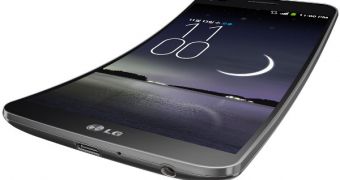
 14 DAY TRIAL //
14 DAY TRIAL // 